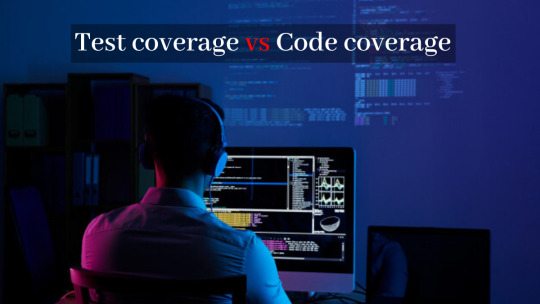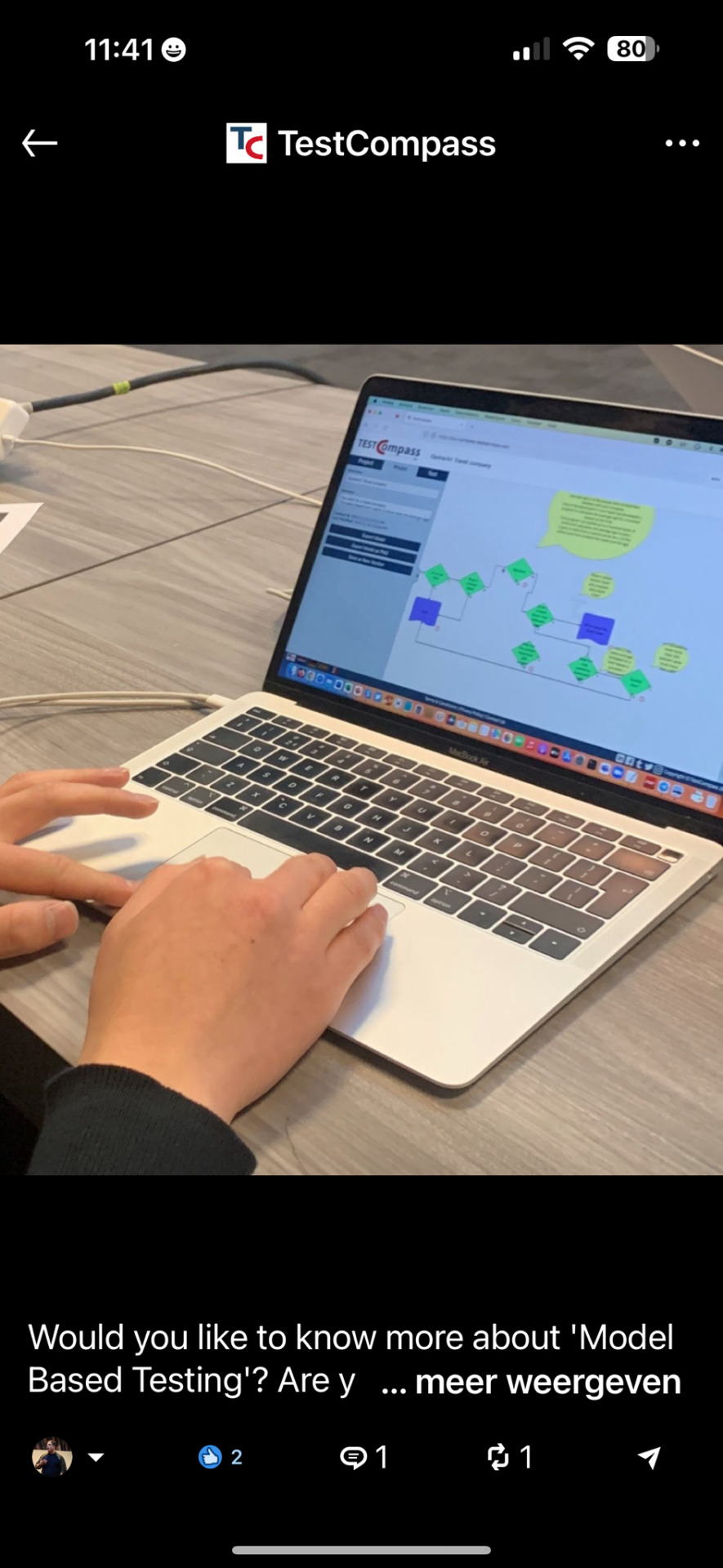#TestCoverage
Explore tagged Tumblr posts
Text
Mastering Software Stability with GQAT’s Regression Testing Services
In the fast-paced world of software development, frequent updates and new features are essential to stay competitive. However, each change risks introducing new bugs or breaking existing functionality. At GQAT Technologies, our Regression Testing services ensure your software remains stable, reliable, and user-ready with every release. By combining cutting-edge automation and meticulous manual testing, we help businesses deliver flawless updates without compromising quality. Here’s how our Regression Testing services drive software success.
What is Regression Testing?
Regression Testing is the process of verifying that new changes or updates to a software application haven’t negatively impacted existing functionalities. It involves re-running a suite of tests to confirm that the core features still work as intended after code modifications, bug fixes, or new feature integrations. This critical quality assurance (QA) practice ensures that your software remains robust through iterative development cycles.
As highlighted on our Regression Testing page, GQAT Technologies specializes in delivering comprehensive regression testing tailored to your project’s needs, ensuring seamless updates and consistent user experiences.
Why Regression Testing Matters
With 80% of software defects introduced during updates or new feature integrations, regression testing is a non-negotiable step in modern development. Without it, businesses risk costly downtime, user dissatisfaction, and damaged reputations. Here’s why regression testing is essential:
Maintains Software Stability: Ensures existing features remain functional after changes, preventing unexpected breakdowns.
Boosts User Confidence: Delivers consistent, high-quality experiences, with 67% of users citing reliability as a key factor in software adoption.
Reduces Costs: Catching defects early cuts fixing costs by up to 50%, compared to addressing issues post-release.
Supports Agile and DevOps: Enables rapid iterations by validating changes in continuous integration/continuous deployment (CI/CD) pipelines.
GQAT’s Regression Testing Approach
At GQAT Technologies, we combine precision, automation, and expertise to deliver regression testing that keeps your software reliable and ready for market. Our tailored approach ensures thorough coverage and measurable results. Here’s how we do it:
1. Strategic Test Planning
We start by analyzing your software’s architecture and requirements to design a customized regression test suite. By prioritizing high-risk areas and critical functionalities, we ensure comprehensive coverage without wasting resources. Our test plans align with your development cycle, whether Agile, DevOps, or hybrid.
2. Automated Regression Testing
Automation is key to efficient regression testing. Using industry-leading tools like Selenium, TestNG, and Cucumber, we automate repetitive test cases to accelerate execution and improve accuracy. Automation reduces testing time by up to 70%, enabling faster releases. For instance, a recent client in the e-commerce sector cut their regression testing cycle by 60% with our automated framework.
3. Manual Testing for Edge Cases
While automation handles repetitive tasks, manual testing is crucial for exploratory scenarios and complex user interactions. Our skilled testers validate usability, edge cases, and integrations that automation might miss, ensuring a polished user experience.
4. Comprehensive Test Coverage
We cover all critical areas, including:
Functional Regression: Verifies core features remain intact after updates.
Integration Testing: Ensures new code integrates seamlessly with existing modules.
Performance Regression: Confirms updates don’t degrade system speed or scalability.
UI/UX Testing: Validates consistent user interfaces across devices and browsers.
5. CI/CD Integration
Our regression testing services integrate seamlessly with CI/CD pipelines, enabling continuous testing in Agile and DevOps environments. Tools like Jenkins and GitLab ensure tests run automatically with every code commit, catching issues early and supporting rapid delivery.
6. Actionable Reporting
We provide detailed reports with metrics like test coverage, defect rates, and execution times. These insights empower your team to make data-driven decisions and prioritize fixes. Our transparent reporting ensures you’re always in the loop.
The GQAT Advantage
GQAT Technologies stands out for its commitment to quality and adaptability. Here’s why businesses trust our Regression Testing services:
Expert Team: Our testers are certified in industry-standard tools and methodologies, delivering best-in-class results.
Scalable Solutions: We tailor our services to projects of all sizes, from startups to enterprises.
Proven Results: A fintech client achieved 99.8% defect-free releases after implementing our regression testing framework.
End-to-End Support: From test planning to execution to remediation, we’re with you every step of the way.
Real-World Impact
Our Regression Testing services have delivered measurable success across industries. For example, a healthcare client reduced post-release defects by 45% by integrating our automated regression suite into their CI/CD pipeline. A retail client ensured seamless mobile app updates, boosting user retention by 30% through consistent performance and UI validation. These outcomes showcase the value of robust regression testing.
The Future of Software Quality
As software development accelerates with trends like AI, microservices, and cloud-native architectures, regression testing will remain critical to maintaining stability. At GQAT, we stay ahead by adopting emerging tools and techniques, such as AI-driven test case generation and cloud-based testing environments, to future-proof your software.
Get Started with GQAT Today
Ready to ensure your software updates are flawless? GQAT Technologies’ Regression Testing services provide the reliability and confidence you need to deliver high-quality software at speed. Whether you’re rolling out new features or maintaining a legacy system, we’ve got you covered.Contact us today at GQAT Technologies for a free consultation and discover how our Regression Testing expertise can elevate your software quality!
#RegressionTesting#SoftwareTesting#TestAutomation#BugFreeReleases#QATesting#ContinuousTesting#SoftwareQuality#TestCoverage#DevOps#QualityAssurance#AgileTesting#GQATTech#ReleaseConfidence#CodeStability#TestingServices
0 notes
Text
Maximizing API Test Coverage with Keploy: 5 Essential Tips

Achieving comprehensive API test coverage is vital for application reliability. Here are five tips to help you leverage Keploy's features effectively.
Main Content:
Leverage Automated Test Generation:
Utilize Keploy's ability to create test cases from real user interactions, reducing manual test creation efforts.
Integrate Seamlessly into CI/CD Pipelines:
Combine Keploy-generated tests with existing testing frameworks like JUnit or PyTest to ensure continuous validation during development cycles.
Utilize eBPF Instrumentation:
Take advantage of Keploy's eBPF-based network interaction capture to support diverse programming languages without code modifications.
Regularly Update Recorded Interactions:
Periodically refresh recorded API calls to reflect the latest user behaviors and application changes, maintaining test relevance.
Monitor Test Results and Iterate:
Analyze test outcomes to identify patterns, address failures promptly, and continuously improve API robustness.
0 notes
Text
What is the importance of test data in automation testing?
Test data is crucial in automation testing for several reasons:
Repeatability and Consistency: Automation tests need consistent and repeatable data to ensure that test cases produce the same results each time they are executed. Having predefined test data allows testers to achieve this consistency.
Coverage: Test data helps ensure that various scenarios are covered during testing. By providing different sets of data, testers can validate different paths and conditions within the application, improving the overall test coverage.
Boundary Testing: Test data often includes boundary values that help in testing the extremes of input ranges. This is important for identifying potential issues at the edges of acceptable input, such as minimum and maximum values.
Error Handling: Automation tests need to verify how the system handles different types of data, including erroneous or invalid input. Test data can include intentionally incorrect or unexpected values to test error handling and recovery mechanisms.
Performance Testing: In some cases, test data is used to simulate real-world scenarios and loads, helping in performance testing. For example, data representing peak loads can be used to evaluate system performance under stress.
Regression Testing: When updates or changes are made to the application, having a set of predefined test data allows for easy regression testing. Testers can quickly rerun tests with the same data to ensure that new changes do not introduce unexpected behavior or regressions.
Data-Driven Testing: Automation frameworks often support data-driven testing, where test scripts are executed with different sets of input data. Test data drives these tests, allowing for efficient testing of multiple scenarios without duplicating test code.
Security Testing: Test data can also include sensitive information like passwords, user credentials, or personal data. Automation tests can verify the security of the system by testing how it handles and protects such sensitive data.
#AutomationTesting#TestDataManagement#TestCoverage#BoundaryTesting#ErrorHandling#PerformanceTesting#RegressionTesting#magistersign#devops#support
0 notes
Text
Testing complex products no longer has to be difficult. With the ‘early Model Based Testing’ (eMBT) tool TestCompass you can automate the visualization of mental models and immediately gain more control over your testing processes.
👉 Early Exploration
In TestCompass you can easily and intuitively create a visual model of your requirements/SUT, allowing you to quickly learn about the functionality, structure, and dependencies of the product.
👉 Model Validation
TestCompass highlights areas where your model may fall short. This gives you the opportunity to critically evaluate and continuously improve your model.
👉 New Test Ideas
The visualizations from TestCompass intuitively help you discover new test ideas. As you create or study the model, you’ll naturally encounter areas that require further investigation.
👉 Shared Understanding
Use the automated visualizations to discuss the model with the business or team. By reviewing the model together, you uncover blind spots, gain new insights, respond to feedback, and create a shared understanding.
👉 Risk-Based
Based on the visualized model, TestCompass automatically generates test cases, aligned with a pre-selected test coverage level (from high to low). This allows for targeted and effective testing exactly where it’s needed.
👉 Impact After Changes
If there are changes in the requirements, no problem. TestCompass analyzes the potential impact on the model/test cases and shows where adjustments may be required.
With TestCompass you can design, improve, and visualize your tests faster and more accurately. Maximize your Model Based Testing and stay one step ahead of issues!
#MBT #ModelBasedTesting #softwareTesting #automation #TestCompass #earlyfeedback #Visualization #testidea #riskbased #testcoverage

0 notes
Text
A frequently asked interview question : When do you stop testing? | SDET UNICORNS

Discover the perfect answer to the common interview question: "When do you stop testing?" With SDET UNICORNS, gain insights into testing strategies, criteria, and best practices to determine when testing should be concluded. Learn about test coverage, quality thresholds, and decision-making factors. Prepare yourself to tackle this critical question with confidence and impress your interviewers!
#InterviewPreparation#InterviewSkills#TestingInterview#SoftwareTestingCareer#TestCoverage#QualityThresholds#TestingStrategies#TestingBestPractices#SDETUnicorns#BoostYourCareer
0 notes
Link
Everything you need to know about code coverage tools and its advantages ,its disadvantage . How to to select code coverage tool ?
0 notes
Text
Test Coverage v/s Code Coverage

A product is not successful unless it serves the purpose of a business. How can you determine its viability then? A well-documented coding and techniques are not immune to human errors, thus leading to the rejection of the product. As a result, it wastes your efforts, time, and resources and above all glaring from clients.
However, thorough testing methodologies can do the tricks and ensure the effectiveness of coding. Unit testing does not always come up to your expectations and offer better testing of a product. Instead of regarding this, go with Test Coverage and Code Coverage. These two are the most comprehensive and popular testing techniques to ensure the efficacy of codes and high product quality. Let’s understand these two coding phenomena by combing their differences and specifications.
Overview: Test Coverage and Code Coverage
Test Coverage and Code coverage are measurement metrics to ease the assessment of the quality of application codes. Code coverage is used during the application is run to determine the exercise of application code. Test coverage applies to the overall test. But, both these metrics are useful and significant for developers to ensure the quality of the application efficiently.
Definition:
What is Code Coverage?
It refers to both manual and automation testing for test cases that cover the number of codes. The metrics of this type of test aims at measuring the total lines of codes and also a number of lines. The primary objective of this metric is to reduce the probabilities of bug attacks through increased length of code coverage.
To run this test, you either use the Selenium framework or any other automated framework.
What is Test Coverage?
This is a test type to ensure the functional quality of a product involving software requirement specifications and other required documents. So, test coverage is something beyond codes, rather it is concentrated on user requirements or purpose-built for expected functionality.
Ways You Can Perform Code Coverage
There are different ways you can run code coverage. You can focus on the following subtypes.
Branch coverage:
Referred to as decision coverage, it makes use of logical branches to be assessed in your code for decision-making with every existing branch. For example, if you use some variables for cross browsing compatibility testing, it is critical to ensuring you use all of the variables using adequate inputs.
Statement coverage:
This includes corner or boundary cases. These codes are the smallest units to be executable only once.
Function coverage:
It refers to a number of functions that are susceptible to be tested, for say exported functions/APIs.
Line coverage:
This is simple. It means a number of lines your code coverage has evaluated.
Ways To Perform Test Coverage
Like code coverage, Test coverage also includes several testing mechanisms. However, which test coverage is important is based upon business propositions.
Unit Testing:
This is referred to as unit testing since it is carried out at a module or unit level. This aims at assessing bug encounters which may differ from the mechanism executed during the integration level.
Functional Testing:
This metric is undertaken to comply with the Functional Requirement Specifications (FRS).
Integration Testing:
Also referred to as a system testing for software is tested on a system level. During the integration of all the necessary modules, this testing is executed.
Acceptance Testing
This is what confirms the acceptability of the final product by end-users. Acceptance testing is kind of a green signal for developers that accelerates the product launch prior to making the final code changes.
Other than these subtypes, some important test coverage is Features Coverage, Risks Coverage, and Requirement Coverage.
Pros of Code Coverage
It improves the effectiveness of test code and provides you ways to enhance the performance of coverage
Regardless of what tool is being used (open-source or something else), implementing the code coverage tool takes less time
Detects bugs in the program flow, thus improving the code quality
Pros Of Test Coverage
Part of black-box testing techniques, it does not interact much with code itself. Yet, it tests software features and maintains compliance with the requirement specifications of the product results. Hence, the isolation between tests and codes offers a straightforward testing approach.
It measures software performance and capability, thus fitting well into acceptance tests.
Characterized by black-box, it does not require much expertise to execute.
Shortcomings of Test Coverage
It is a manual approach rather than being an automated methodology. It takes time and effort to assess and build test cases.
No concrete tool is available to measure its coverage. It is a manual task that requires testing coverage against the number of tests. Hence, it is vulnerable to judgmental errors.
Shortcomings of Code Coverage
Tools used in this methodology apply to Unit test only. It necessitates checking with every test type.
No easy availability of improved code coverage tools
It is tough to comply with the available tool with your project even it is a good coverage tool
Conclusion
Software development looks for a systematic approach these days to ensure the viability and accessibility of the product. This ensures testing completeness and effectiveness of the product in the release stage.
And here test coverage and code coverage seem to be valuable for organizations. With code coverage being a white-box approach while test code being a black-box approach, you need to determine your testing requirement depending on your product specifications. Before you assign with any of the testing methodologies, forget not to decide upon your resources and tentative deadline. After all, it is indeed crucial how you can maximize your effort and resources while achieving a higher level of product satisfaction.
0 notes
Text
When to Stop Testing: A Crucial Question in Software QA Interviews | SDET Unicorns

Join SDET Unicorns as we explore the crucial question of "When to stop testing?" in software QA interviews. Discover expert insights, industry best practices, and decision-making strategies to determine the optimal point to conclude testing cycles. Stay tuned to gain a deeper understanding of test coverage, risk assessment, exit criteria, and more. Ace your software QA interviews with confidence! 💼🎯
#SDETUnicorns #SoftwareQAInterviews #TestingStrategies #TestCompletionCriteria #RiskAssessment #TestCoverage #QualityAssurance #DecisionMaking #InterviewPreparation #TestingInsights
0 notes
Text
Automation Testing Company in USA & Selenium Testing Services Company in USA-Testrrig Technologies

Want to incresed your testcoverage but don’t know how?Don’t worry visit Testrig Technologies here: Selenium Automation Testing Services
Testrig Technologies apply perfect and unique strategy to maximize your test coverage with the latest automation testing techniques and Tools:
See What Testrig Technologies Clients say’s about Them:
“TESTRIG is doing an amazing job for over a year now in handling our Quality Assurance needs. They have worked closely with our development team and consistently tested our product by providing both Manual and Automation Testing with Selenium. I would definitely recommend TESTRIG to anyone in need of QA services.
” — Gabriel Fenton (Upstock)
For more information visit to the official website of Team Testrig Technologies here:Hire Testers
#Automation Testing Company in USA#Automation Testing Services USA#Selenium Automation Testing Services USA#Automation Testing Company in UK#Automation Testing Services UK#selenium#USA#UK
0 notes
Text
Feature/22 testcoverage (#opensource GitHub repo cs-util-com/cscore) Details at https://t.co/2ShPHbXwa1 pic.twitter.com/bV36khr0VE
— CsUtil.com (@csutil_com) August 11, 2019
From http://twitter.com/csutil_com/status/1160473961878175744
0 notes
Text
How Are You Managing Your Test Debt?
How Are You Managing Your Test Debt? As testers, how do we create a balance and stay at the right test-debt quotient? With short sprints sometimes spanning just a few days.. read more at: https://www.techwell.com/techwell-insights/2018/10/how-are-you-managing-your-test-debt @QAInfoTech #Testing #QualityAssurance #TestManagement #TestAutomation #TestCoverage

0 notes
Text
Would you like to know more about 'Model Based Testing'? Are you curious about how you can automatically support the BDD requirements discovery practices 'Discovery' and 'Formulation'?
Do you want to know how 'collaborative modeling' can optimize your testing process or how you can automate your test design in a structured way and gain insight into the achieved test coverage?
Do you want to quickly and easily gain insight into the impact on your tests after a change in the test basis? Are you looking for a way to quickly explore and test your requirements from the start or to communicate clearly about the automatically generated test ideas, etc?
Discover TestCompass's very easy to use 'early Model Based Testing' (eMBT) and Behavior Driven Development (BDD) supported solution and follow the page of TestCompass here on Linkedin for the latest updates and innovations!
#TestCompass #eMBT #BDD #testing #testcoverage #requirements #impactanalysis #testbasis #explore #shiftleft #earlyfeedback #easytouse

0 notes
Text
The Testing Pyramid Demystified: Conquer Test Automation Today #shorts

In this engaging #shorts session, we demystify the Testing Pyramid and provide practical guidance on test automation. Learn how to strike the right balance between unit tests, integration tests, and end-to-end tests. Explore strategies for faster feedback cycles and improved test coverage. Conquer test automation challenges and elevate your software quality assurance process today!
#TestingPyramid#TestAutomation#SoftwareTesting#QualityAssurance#ShortsSession#TestStrategy#TestCoverage#EfficientTesting#AutomationBestPractices#OptimizeTesting
0 notes
Text
The Value of Test Coverage
http://dlvr.it/1SBgb9
0 notes
Text
When to Stop Testing: A Crucial Question in Software QA Interviews

When to stop testing?" - It's a crucial question often asked in software QA interviews. Dive into this insightful discussion where experts shed light on the factors to consider when determining the end of testing cycles. Learn about risk-based testing, test coverage, exit criteria, and other key indicators that help make informed decisions. Enhance your understanding and be prepared to tackle this question confidently in your next interview!
#SoftwareTesting #QAInterviews #TestingStrategies #TestCompletionCriteria #RiskBasedTesting #TestCoverage #QualityAssurance #TestingDecisions #InterviewPreparation #TestingInsights
0 notes
Text
👉 In TestCompass you can draw a graphical model in a very user-friendly and intuitive way. The used model has a high level of abstraction and is readable for both business and technical stakeholders. This stimulates communication and collaboration, the key to a shared understanding. From there you can generate the minimum set of tests fully automatically based on a pre-selected test coverage, from weak to strong.
💡 And if the model is incomplete (open ends, missing nodes, wrong sequence, missing connections, etc), you will automatically receive a notification. This makes this entire process in TestCompass a real exploration of the proposed requirements.
Curious how this works? Try it yourself with the free trial version👇
🕸️ https://lnkd.in/gEq7XUZ
#exploratory #earlyfeedback #testdesign #testcoverage #easytouse #freetrial #testmodel #requirements #collaboration #communication #testing #collaborativemodeling #modelchecking #sharedunderstanding

1 note
·
View note